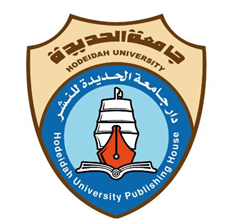Transfer of Analytical Method's Pharmacopoeias for Assay of Pharmacokinetic In-vitro and Impurities Profile Based on Different Concepts
DOI:
https://doi.org/10.59846/ajbas.v3i1.637Keywords:
Transfer , re validation , Method’s PharmacopeiasAbstract
This paper was carried out to give requirements , criteria and protocol for a transfer (re-validation/partial validation) of pharmacopeia analytical methods based on European Pharmacopeia (EP) and United State Pharmacopeia (USP) requirements. The different steps in a transfer of analytical methods for quantification of active ingredient (assay), impurities profile of drugs sub-stance and finish products and assay of drug dissolution assay (pharmacokinetic in-vitro) were explored, discussed and illustrated with a examples. The recommendations and requirements for this purpose were described in some international guidelines that due to the lack details of protocol. The authors showed both protocols with aid protocol of International Conference harmonization (ICH) and simple statistical process for management of data obtained of transfer of method's pharmacopeia. These analytical methods need verification of system suitability (revalidation or partial validation) , the method's pharmacopeia (reference method) for quality control of drug substance isn’t formal partial validation required based on EP concept, while these methods for quality control of drug product need revalidation based on EP and USP requirement. In conclusion the transfer and application of method's pharmacopeias by pharmaceutical manufactures require system suitability test and partial revalidation to assure the report of routine analysis results and reports.
References
Artiges A.,. The role of pharmacopoeias in international harmonization. Journal of Pharmaceutical and Biomedical Analysis . (2001) 24, 769–772 .
Calam D.H ., Design and international harmoniza-tion of pharmacopoeia1 standards . Journal of Pharma-ceutical and Biomedical Analysis . (1995) 14 , l-5 .
International Conference on Harmonization of Tech-nical Requirement for the Registration of Pharmaceuticals for Human Use Topic Q4 (R1) : Pharmacopoeias , (2007).
European Directorate for the Quality of Medicine and Health Care. Validation of analytical procedure (2005)
Food and Drugs Administration . Center for Drug Evaluation and Research (CDER) , Validation of Bio-analytical Method Methods (2001) .
Unites State Pharmacopeia (USP). Unites States Pharmacopoeia Convention . 33 (2010).
Amood Al Kamarany, M., Karbane , M. E., Alana-zi , F., Cherrah , Y., & Bouklouze , A. (2023). Effect of Biopharmaceutical Classification System on Pharmacoki-netic and Mechanism of Drug Release In vitro . Abhath Journal of Basic and Applied Sciences, 2(2), 49–53. https://doi.org/10.59846/ajbas.v2i2.524
International Conference on Harmonization of Technical Requirement for the Registration of Pharma-ceuticals for Human Use Topic Q2 (R1) : Validation of analytical procedures : Text and Methodology , Geneva , (2005).
El Karbane, M.; Azougagh, M.; Amood, A.L.K.M.; Bouchafra, H.; Cherrah, Y.; Bouklouze, A. Develop-ment and validation of a reversed-phase HPLC method for simultaneous analysis of butylhydroxyanisol, simvas-tatin and its impurities in tablet dosage forms. Ann. Pharm. Fr. 2014, 72, 244–255.
Amood Al Kamarany, M., & Abary , M. Y. S. (2023). In vitro – In vivo Correlation : Dissolution Profile and Pharmacokinetic of Calcium Carbonate Tablets Mar-keted in Yemen. Abhath Journal of Basic and Applied Sciences, 2(2), 54–60. https://doi.org/10.59846/ajbas.v2i2.525
Al-Kamarany, M. A., Karbane, M. E., Ridouan, K., Alanazi, F. K., Hubert, P., Cherrah, Y., & Bouklouze, A. (2012). Transfer of drug dissolution testing by statisti-cal approaches: Case study. Saudi Pharmaceutical Jour-nal, 20(1), 93-101.
Al-Kamarany MA, Alwosaby AS, El Karbane M, Karrouchi K. (2013) SFSTP guideline 1992- based vali-dation of direct potentiometric method for quantification of sodium bicarbonate in baby’s bliss gripe water availa-ble in Yemen. Int J Pharm Pharm Sci 5: 411-413.
Elkarbane, M., Al-Kamarany, M. A., Bouchafra, H., Azougagh, M., Cherrah, Y., Hubert, P., & Bouklouze, A. (2015). Total error-based validation includ-ing the experimental design-based robustness evaluation of a stability-indicating method for the simultaneous quantification of hydrochlorothiazide and valsartan in tab-let formulations. Acta Chromatographica, 27(2), 195-215.
Karbane, M. E. L., Ramli, Y., Al-Kamarany, M. A., Bouchfra, H., Radi, M., Karrouchi, K., ... & Azougagh, M. (2014). Development and validation of HPLC dissolu-tion assay of simvastatin tablets under normal and accel-erated conditions. Journal of Chemical and Pharmaceuti-cal Research, 6(6), 886-893.
Al-Kamarany, M. A., El Karbane, M., Belomaria, M., Azougagh, M., Hubert, P. H., Alanazi, F., & Bouklouze, A. (2012). Development and validation of LC method for the diclofenac sodium release determination using accuracy profile concept. Asian Journal of Chemis-try, 24(10), 4393.
Downloads
Published
How to Cite
Issue
Section
License
Copyright (c) 2024 Mohammed Amood Al Kamarany

This work is licensed under a Creative Commons Attribution 4.0 International License.





